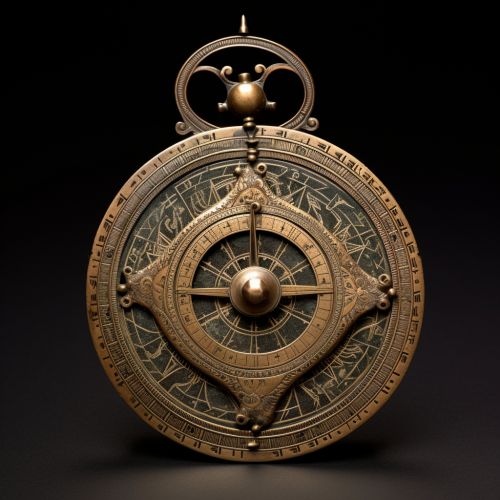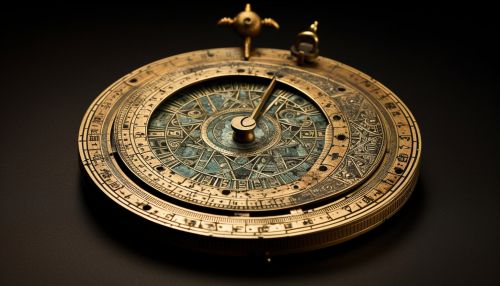Astrolabe
History
The astrolabe is a complex instrument with a rich history that spans thousands of years. Its origins can be traced back to the ancient Greeks, specifically the astronomer Hipparchus, who is often credited with its invention around 150 BC. However, it was the Islamic scholars during the Islamic Golden Age who refined and expanded upon the use of the astrolabe, making it an essential tool for navigation and astronomy.


The astrolabe was further developed in the medieval period, with the introduction of the planispheric astrolabe, a more advanced version that allowed for the representation of the celestial sphere on a plane. This development was instrumental in making the astrolabe a more versatile and practical tool, used not only for astronomical observations but also for timekeeping, surveying, and navigation.
Design and Function
An astrolabe consists of several key components: the mater, the rete, the rule, and the alidade. The mater is the base plate, typically circular in shape, which holds the other components. The rete, a complex network of lines and pointers, represents the celestial sphere and is used to plot the positions of the stars and planets. The rule and alidade are used to measure angles and to perform calculations.
The astrolabe operates on the principle of stereographic projection, a method of representing the three-dimensional celestial sphere on the two-dimensional surface of the instrument. By aligning the rete with the mater, the user can simulate the motion of the celestial bodies and determine their positions at any given time.
Uses
The astrolabe has been used for a variety of purposes throughout history. In astronomy, it was used to measure the altitude of celestial bodies and to predict their positions. In navigation, it was used to determine latitude and longitude, making it an essential tool for sailors and explorers. In timekeeping, it was used to determine the time of day or night based on the position of the stars. In surveying, it was used to measure angles and distances.
Modern Applications
While the traditional astrolabe has largely been replaced by more modern instruments, it still holds a place in contemporary astronomy and education. Some astronomers use astrolabes to demonstrate principles of celestial mechanics, while educators use them as teaching tools to explain the movements of the stars and planets. In addition, replicas of historical astrolabes are often used in museums and exhibitions to illustrate the history of science and technology.
